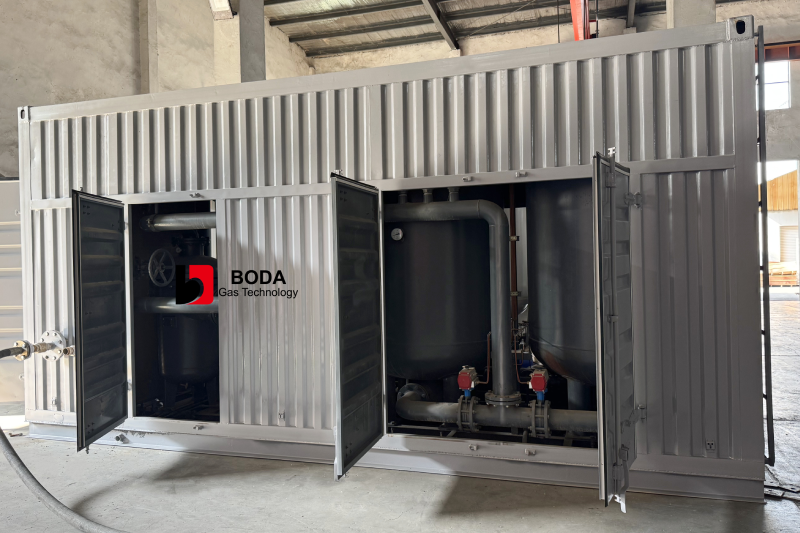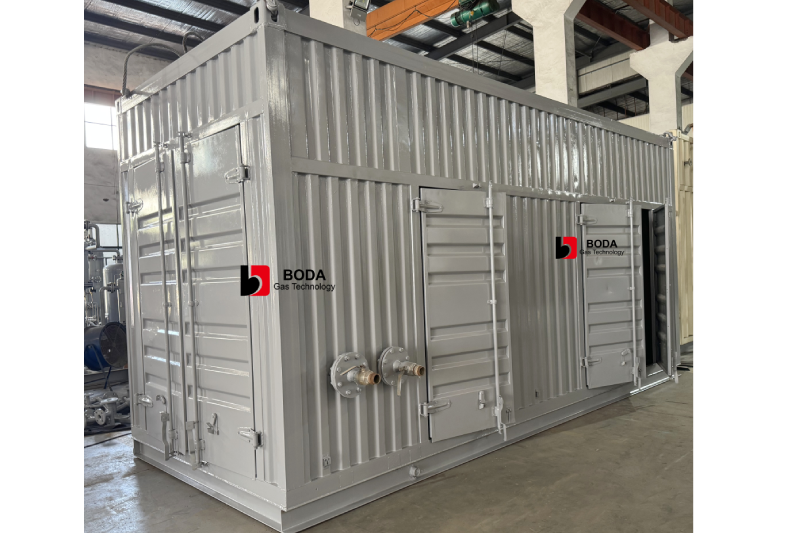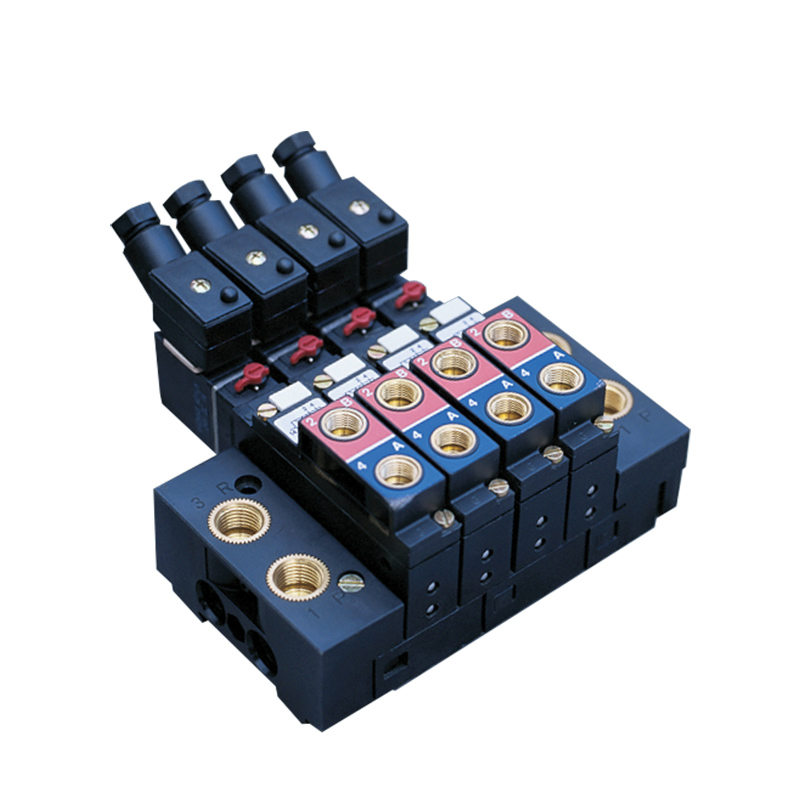The PDL-140 mobile pipeline compressed air dryer combines a high-efficiency air cooler, oil separator, and advanced compressed air dryer into a single integrated system. Designed with a skid-mounted layout, it includes PLC control, an online dew point monitor, and a flow meter for real-time monitoring. Its containerized design enables easy transportation, on-site mobility, and efficient performance in field operations.
The PDL-140 mobile pipeline compressed air dryer provides reliable and efficient drying performance for oil, gas, and industrial pipelines. Its modular, containerized structure ensures superior purification, high automation, and convenient transportation for field applications.
Pipeline drying for oil, gas, and industrial applications is a vital process during the construction and maintenance of pipeline infrastructure. This ensures that newly built pipelines are completely free of moisture, preventing corrosion, contamination, and system failures. Maintaining a low dew point in the system is critical to ensuring long-term operational stability and protecting valuable assets.
Importance of Pipeline Drying
Pipeline drying is an essential step in preparing and maintaining pipelines that carry natural gas, oil, or industrial gases. Before pipelines are put into service, residual moisture and contaminants must be eliminated to avoid potential system degradation. Moisture inside a pipeline can lead to corrosion, hydrate formation, and microbial growth, all of which can significantly reduce pipeline integrity and performance.
Effective drying not only safeguards against physical damage but also ensures the purity and efficiency of transported gases. In the oil and gas sector, even minimal water vapor presence can cause operational problems such as flow restriction and freezing, especially in low-temperature environments. For industrial applications, moisture can react with transported chemicals, leading to contamination or hazardous conditions.
Compressed air dryers play a crucial role in this process by removing water vapor from the compressed air used for purging pipelines. By lowering the air’s dew point, these systems ensure that all internal surfaces of the pipeline remain dry. This step is vital before introducing gases or pressurizing the system, as it prevents unwanted reactions or corrosion. As a result, pipeline drying using reliable compressed air dryer systems extends the service life of the infrastructure and minimizes maintenance costs.
Dew Point Drying: A Key Step in Pipeline Drying
Dew point drying is a technical process aimed at reducing the moisture level in compressed air to a precise dew point target, often as low as -40°C or below. This process ensures that the air used for drying pipelines contains virtually no water vapor that could condense during operation. The dew point value reflects the lowest temperature at which moisture will start to condense, making it an essential indicator of air dryness and quality.
The PDL-140 mobile compressed air dryer uses a combination of refrigeration, adsorption, and separation technologies to achieve and maintain the desired dew point. Equipped with advanced monitoring instruments, such as an online dew point meter and intelligent flow controller, it provides accurate feedback for real-time adjustments. This ensures consistent dryness across the entire drying cycle, regardless of fluctuating environmental or pressure conditions.
Maintaining a low dew point during pipeline drying is particularly critical when dealing with high-pressure natural gas or chemical process pipelines. In these environments, any residual moisture can lead to the formation of hydrates or internal corrosion. By ensuring a stable, low dew point, operators can avoid expensive downtime, improve safety, and enhance the long-term performance of their pipeline systems. The PDL-140’s ability to achieve a dew point of -40°C exemplifies its suitability for demanding industrial applications.
Enhancing Drying Performance Stability
Equipped with an Intelligent Adaptive Control System
The PDL-140 features integrated inlet pressure sensors, flow sensors, and dew point detectors, paired with a PID intelligent controller. When inlet pressure/flow fluctuates, the system automatically adjusts the adsorption fan speed and regeneration heating temperature. Upon detecting excessive dew point, it triggers real-time alerts and optimizes regeneration cycles to ensure dried air consistently meets process requirements (e.g., maintaining a stable -40°C pressure dew point);
Optimized adsorption system architecture
Employs a “layered adsorption + constant-temperature regeneration” design: – Adsorption tower features layered packing of adsorbents with different pore sizes (upper layer: coarse-pore molecular sieves adsorb large moisture particles; lower layer: fine-pore activated alumina for deep dehydration), enhancing adsorption efficiency; – Regeneration stage incorporates a constant-temperature control module to prevent incomplete regeneration in low-temperature environments and adsorbent aging in high-temperature conditions, extending adsorbent lifespan by over 30%. The regeneration process incorporates a constant-temperature control module to prevent incomplete regeneration in low-temperature environments and adsorbent aging in high-temperature conditions, extending adsorbent lifespan by over 30%.
Conclusion
If you need expert advice on selecting the optimal compressed air dryer to meet your pipeline drying requirements, please don’t hesitate to contact our team. We will help you ensure the safety and reliability of your pipeline infrastructure through tailored compressed air dryer system solutions.






